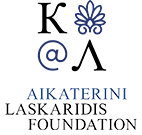Art and antiquities (4900 Subjects)
Monument of Philopappus, Athens: Fig. 1. The base, capital and architrave of the pilaster, in the back front. Fig. 2. The plan of the capital reversed. Fig. 3. The profile of the capital. Fig. 4. The mouldings of the niches in the curved front.
Monument of Philopappus, Athens: Fig. 1. The capital and entablature of the curved or principal front. Fig. 2. Section of the capital.
Monument of Philopappus, Athens: The central part of the basso relievo under the middle niche; Philopappus is proclaimed consul of Athens.
Monument of Philopappus, Athens: Philopappus is proclaimed consul of Athens.
Monument of Philopappus, Athens: Philopappus is proclaimed consul of Athens.
Monument of Philopappus, Athens: Philopappus is proclaimed consul of Athens.
Coins of ancient Corinth showing Pegasus, Athena, Persephone, and Bellerophon killing Chimaera.
The Tail-Piece is an Isthmian crown, in the center of which is a medallion of Bellerophon watering Pegasus copied from an antique gem.
The temple of Apollo in Ancient Corinth. In the foreground two men on horseback and two women promenading. A small party of card players.
Temple of Apollo, ancient Corinth: Fig. 1: Elevation of what is supposed to have been the flank of the temple. The modern wall between the columns is inserted in this elevation no measures of the column which formed a part of the pronaos have been found. Fig. 2: Plan of the temple.
Temple of Apollo, ancient Corinth: Fig. 1: Capital and architrave of the columns with the step. There were six drops under each triglyph, but all of them broke off, for which reason they could not be measured nor drawn. Fig. 2: Annulets, or listels under the ovolo, full size.
View of Acrocorinth.
Fragment from church in Athens.
Relief showing an athlete, Athens.
View of Ilissus river and the partialy destroyed bridge which led to the Panathenaic Stadium. A group of shepherds with their flock prepare to spend the night at the site.
Plan of the Roman bridge over Ilissus, with the elevation of it next to the south west.
View of the Stadium Panathenaicum, taken as standing upon the elevated part of the circular end, which is next to the south, and looking down upon it.
Architectural feature of ancient column.
Pnyx: Fig. 1.The plan of the remains on the rock [...]. Fig. 2: Plan of the bema, the public speaking platform . Fig. 3. Profile of the bema.
Coins from Macedonia.
Relief from Megali Panagia church, Thessaloniki.
View of the sculptures of the now lost Incantadas monument at the southern entrance of the Roman Agora of Thessaloniki. The sculptures were incorporated in the house of a family of Sephardi Jewish merchants. British consul Paradise, who has come to show John Stuart and Nicholas Revett the monument, meets the owner of the house. A young servant offers the consul a cup of coffee while from above the owner's wife reprimands her husband for not having invited the consul to sit before offering him coffee. On the left, a woman who is spinning approaches the travellers. On the right, Stuart and Revett with the young son of the British consul, who is escorted by the consul's dragoman (interpreter).
The now lost Incantadas monument, Thessaloniki: Plan, elevation and section.
The now lost Incantadas monument, Thessaloniki: The capital and entablature.
The now lost Incantadas monument, Thessaloniki: Pedestal, base and plan reversed of the capital.
The now lost Incantadas monument, Thessaloniki: Moulding of the Attic, and two Macedonian medals of the same device; one barbarous, the other elegant work.
The now lost Incantadas monument, Thessaloniki: A figure representing Victory. [Lion's head added by Revett).
Aura, from the now lost Incantadas monument, Thessaloniki.
Dioscorus from the now lost Incantadas monument, Thessaloniki.
Ganymedes from the now lost Incantadas monument, Thessaloniki.































